The multiple fake tales regarding what went on at the House in Cofete, were topped up by the existence of a fence at the entrance of the property, which prevented people from accessing Jandía, since what was taking place in Cofete had to remain a secret. Those stories are also based on lack of knowledge regarding when the house dated back to, and it was therefore presumed that it had been built during the 2nd World War —when in fact, it had only started being built years after the end of the war—. The dates when the fence was built and finished, have also been mistaken.
Ever since the 15th Century, there was a wall there, “Jandía’s Wall”, which was a Pre-Hispanic construction placed in the neck of land that connects Jandía with the rest of the island, and in turn separated the kingdoms of Maxorata and Jandía. It was an approximately 6-km long wall that went from coast to coast (windward —La Pared— leeward —Matas Blancas—).
Page 3 of letter n. 10 from D. Guillermo Schrauth to D. Arturo Kamphoff, dated 16/12/46, in the heading “Jable’s Wall”, reads the following: “Few traces remain from the ancient wall, around 1,000 metres, between 20 cm and 1 metre tall, approximately (…) and, years ago, when plenty of lime stones were taken from Fuerteventura, the wall was torn apart in order to have the most useful stones at hand.”
Already in the letter n. 38 from D. Guillermo Schrauth to Gustav Winter, dated 5/10/1946, the arrival of Master Juan Concepción Villalba was announced, and his heading toward Cofete in order to set the work underway. On page 4 of said document, in the heading called “Fenced Wall”, it is mentioned thatthe ancient wall, that goes from coast to coast, is 6725 metres long and that it could be redone using lime and stones.
Although in the first letters it said that the reconstruction work of the wall could start in a month, Gustav Winter did not agree to do so, since he had previous experience when it came to walls built in different parts of Jandía to prevent the cattle from accessing the forest and crops area. Those walls were knocked down easily during times of drought, allowing the cattle to cross over.
It was in 1949, upon the signing of the *Medianería Agreement with the medianeros, when he decided to build the “fence”, with wooden and spiked wire posts.
*Medianería has been the historically prevailing land exploitation system in the Canary Islands since the 16th Century.
(*) Medianería: an agricultural and cattle breeding system where the costs and profits are shared between the owner of a property and the medianeros (who were behind the production). Diccionario básico de canarismos.
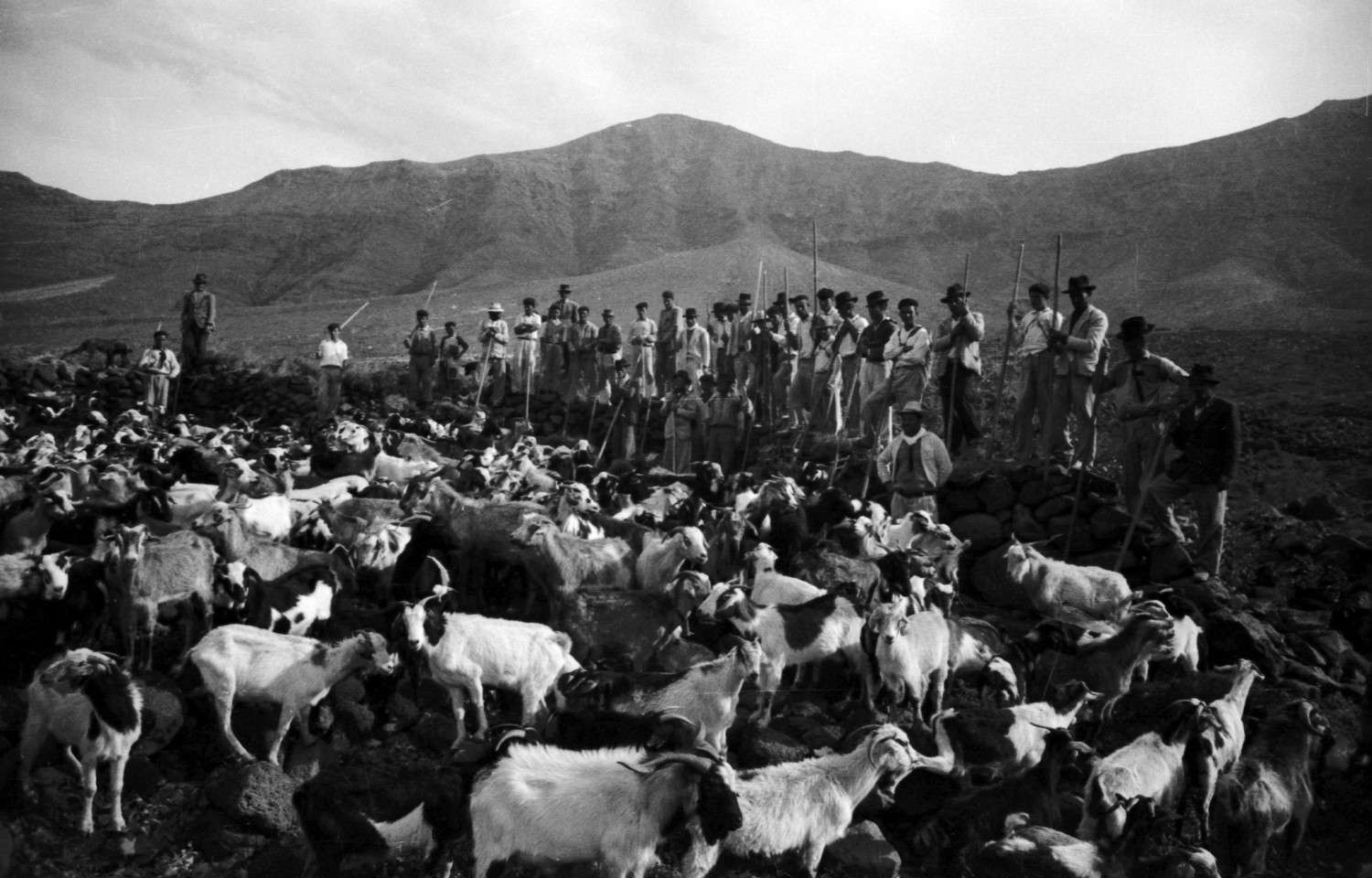
"Apañada"
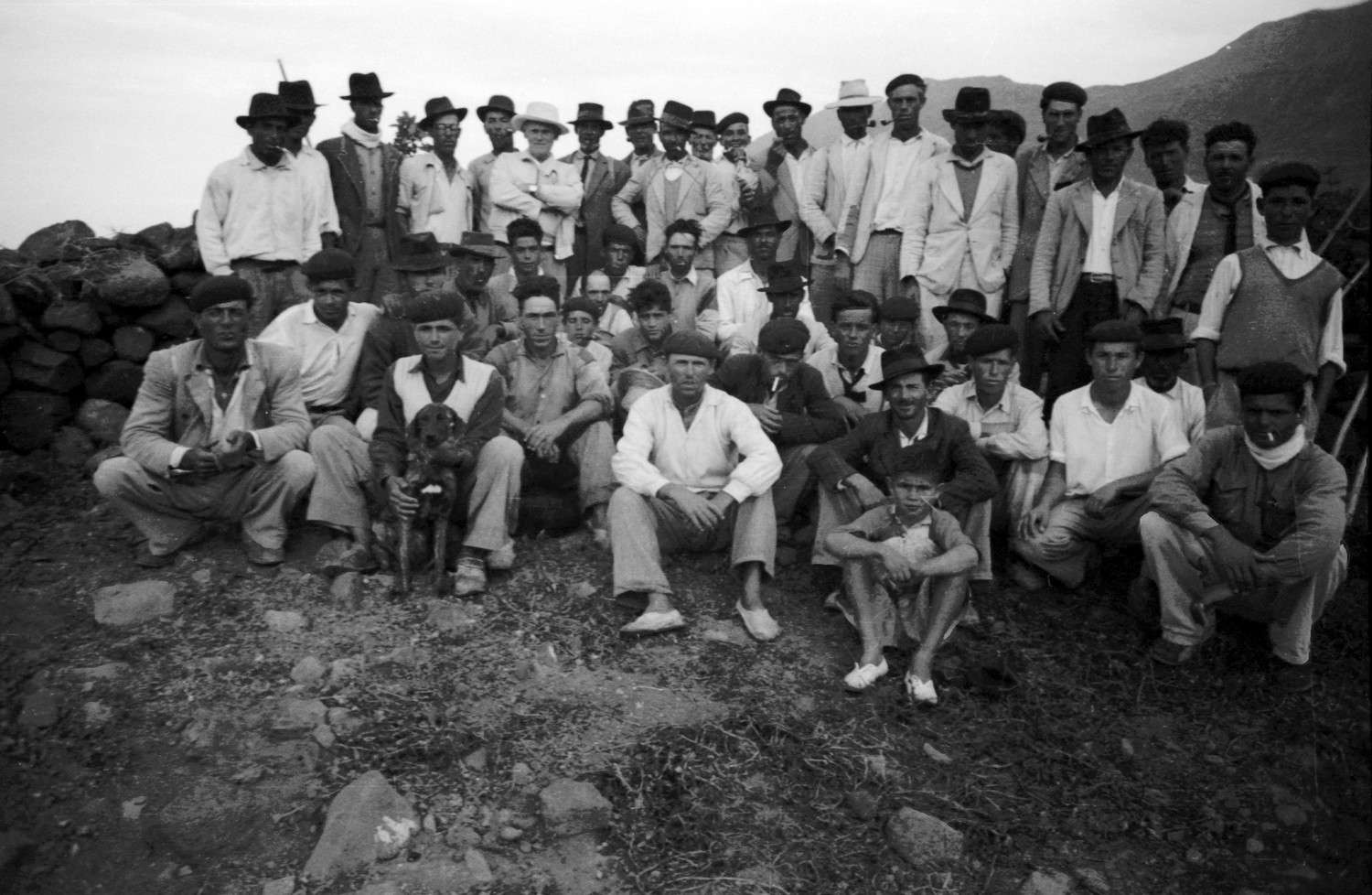 Gustav Winter and "Medianeros" in 1954
Gustav Winter and "Medianeros" in 1954
Therefore, the construction of the wall was mainly cattle focused:
- On the one hand, the idea was to try to avoid cattle and crop products from being taken out and sold elsewhere unmonitored (since the owner had to receive 50% of the production).
- On the other hand, the medianeros were also interested in preventing other animals outside from entering (not included in the production) to graze, and in doing so, reducing the food available for his cattle.
- Lastly, the aim was to prevent lamb from the outside to enter the Jable and get mixed up with the Karakul breed they had within the property, which had been purchased in 1948 in the Jable area. That type of breed was only supposed to mate with pure and same breed ram. They had been introduced with the intention to provide highly popular skin used to make astrakhan coats. The local lamb within the property was to be neutered. In order to breed Karakul lamb, they were required to hold a special permit given by the General Management of the Ministry for Farming and Agriculture. Furthermore, the breeder could lose said permit, should the purity of the breed not be guaranteed. In the end, the financial profits were not as high as expected and breeding Karakul lamb ceased in 1957.
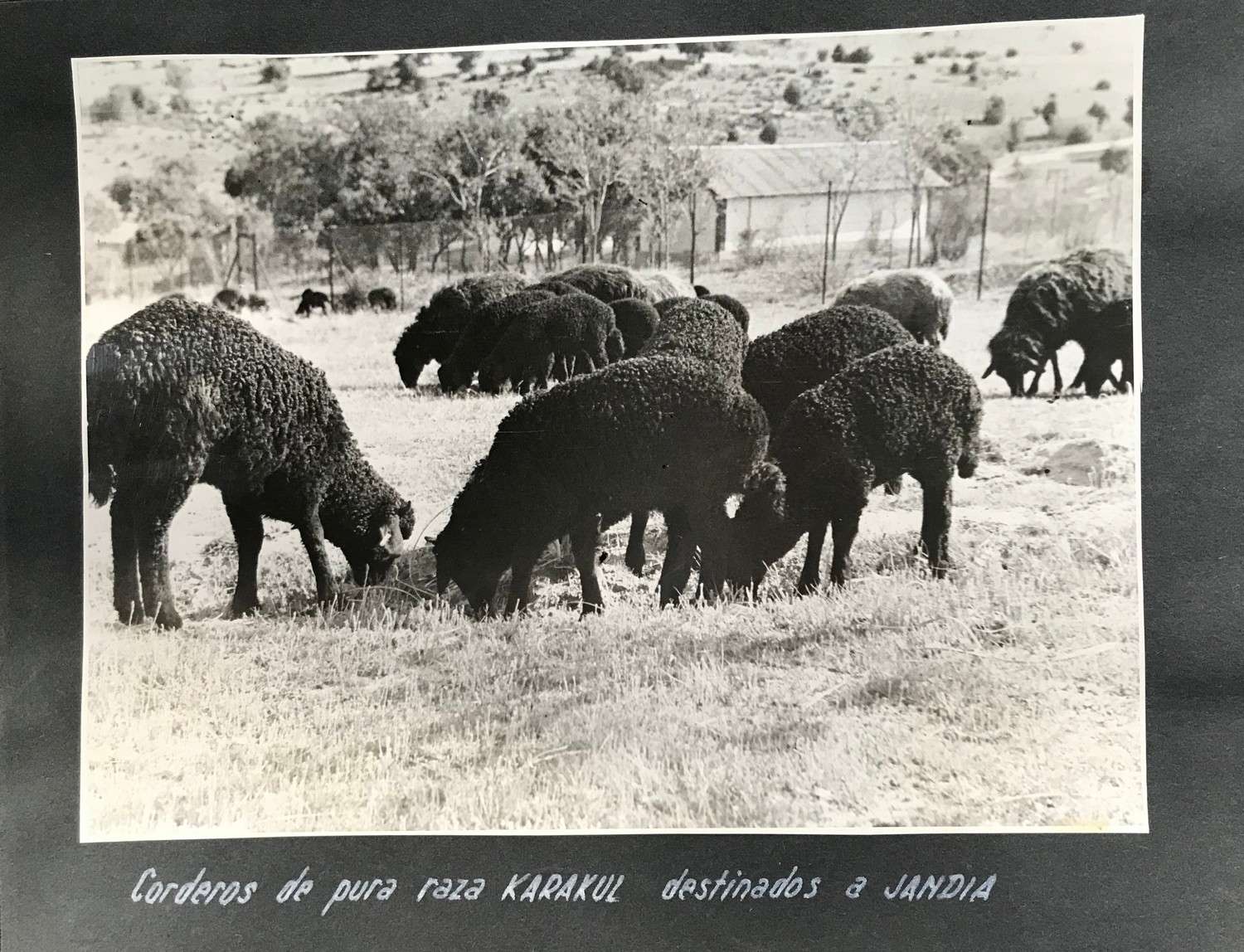 Karakul Pure Race Lambs for Jandia
Karakul Pure Race Lambs for Jandia
 Karakul lamb stallow
Karakul lamb stallow
Key document are enclosed regarding the list of medianeros of the Dehesa in Jandía between 1948 and 1949, who signed the Agreement, including the list of animals they then had, the crop surface and the location area of each of them.
In said list of medianeros, it says that number 38 was Mr. Rafael Matos Viera, located in Pescenescal, who moved to the house in Cofete in 1976 with several members of his family (further information can be found in The Life of the House section).
Although it is not included in the list of medianeros, between 1949 – 1951, Hamed (“Jamete”, mentioned in relation to the picture in the house of Cofete in September 1948), used to be in charge of the cattle in the Jable area.
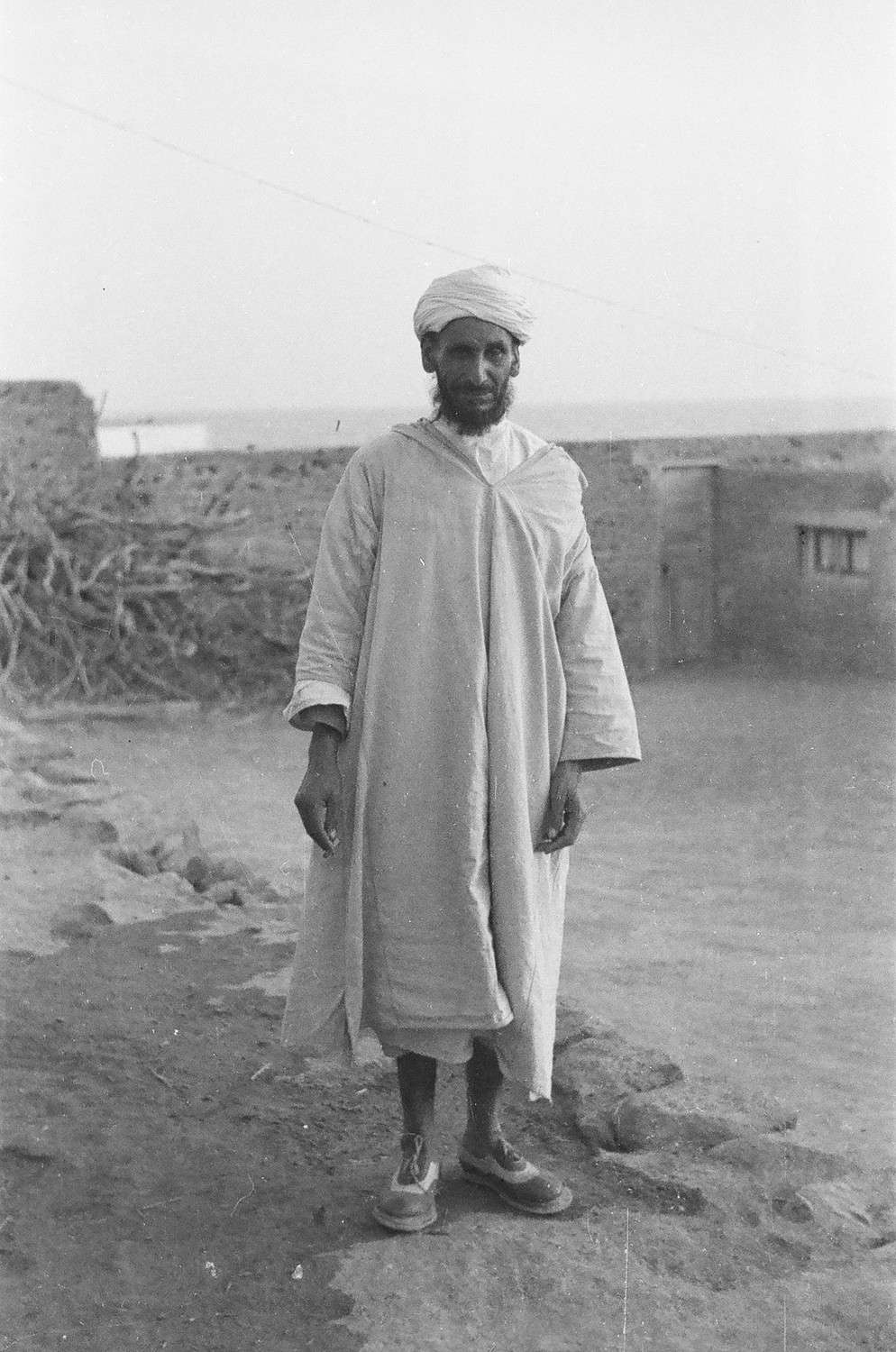 Jamete
Jamete
In the Matas Blancas house, a security guard called Mr. José Viera Torres, from Morro Jable, lived at the entrance of the property. The guard monitored access to the land. In order to do so, his appointment was requested to be granted by the Pájara Town Hall (application dated 4th August 1949).
In order to build the wall, fence posts from La Palma were used. This document includes:
- A letter from Mr. Arturo Kamphoff (Las Palmas) to Gustav Winter (who had recently moved to Jandía) dated 17/09/1948 including the quotation of the Forest Farming and Commercial Exploitation, “El Canal”, from La Palma, 6,000 fence posts headed to Fuerteventura.
- A letter from Mr. Arturo Kamphoff to Gustav Winter, dated 4/1/1949, heading called “1,000 fence posts from near La Palma”, announcing the upcoming arrival of the first 1,000 fence posts from La Palma.
- Letter from Mr. Arturo Kamphoff to Gustav Winter, dated 8/6/1949 in relation to the receipt and fees for the posts sent from La Palma.
- A note written by Gustav Winter to the security guard Mr. José Viera Torres, dated 9th August 1949, giving instructions regarding how to put down the first fence posts.
On page n. 2 of the letter from Mr. Arturo Kamphoff to Gustav Winter, dated 29/9/1949, an upcoming delivery is mentioned, 140 rolls of piked wire to Guanchinerfe, and that captain Mr. Miguel was to be asked to unload it in Matas Blancas.
There is also a letter from GW to the security guard, Mr. José Viera Torres, dated 17/12/1949, informing of the upcoming arrival of a group of hunters, members of the Hunters Society, aiming to catch living rabbits to be taken to other islands. In 1953 and 1954, there was a plague of rabbits in Jable, which lessened the grazing available for cattle use, so there were several hunting trips done in an attempt to cut back on rabbits. Said letter, also mentions: “the van, as you are already aware of, cannot cross the Jable”. Prior to the 1959 Eclipse, which led to a new outline of the road, the Jable was a significant natural obstacle when it came to accessing Jandía. In addition, communication and transport between Morro Jable and Matas Blancas had to be mainly done by means of a longboat.
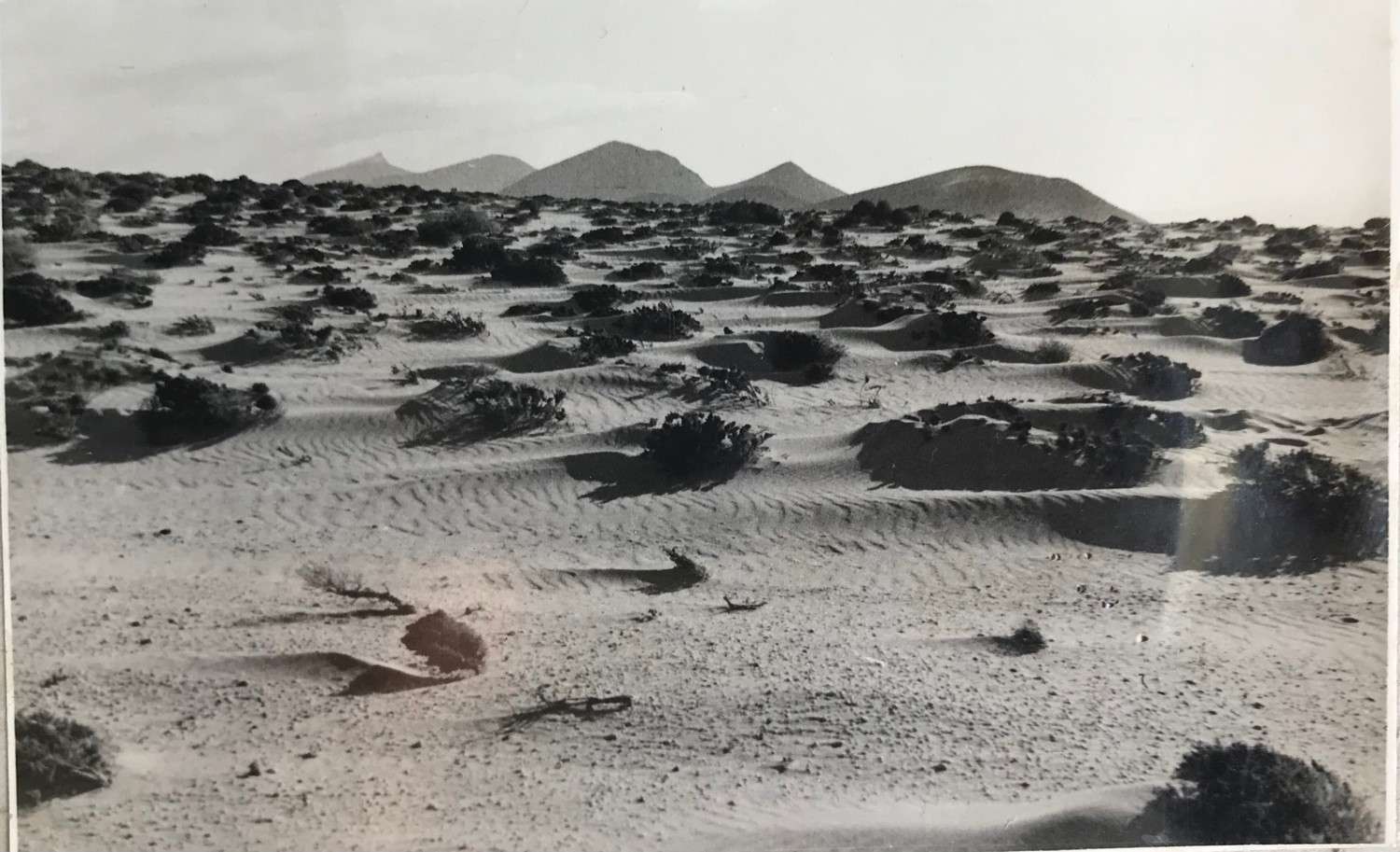 The Jable 10 km of dunes that in-communicated Jandia
The Jable 10 km of dunes that in-communicated Jandia
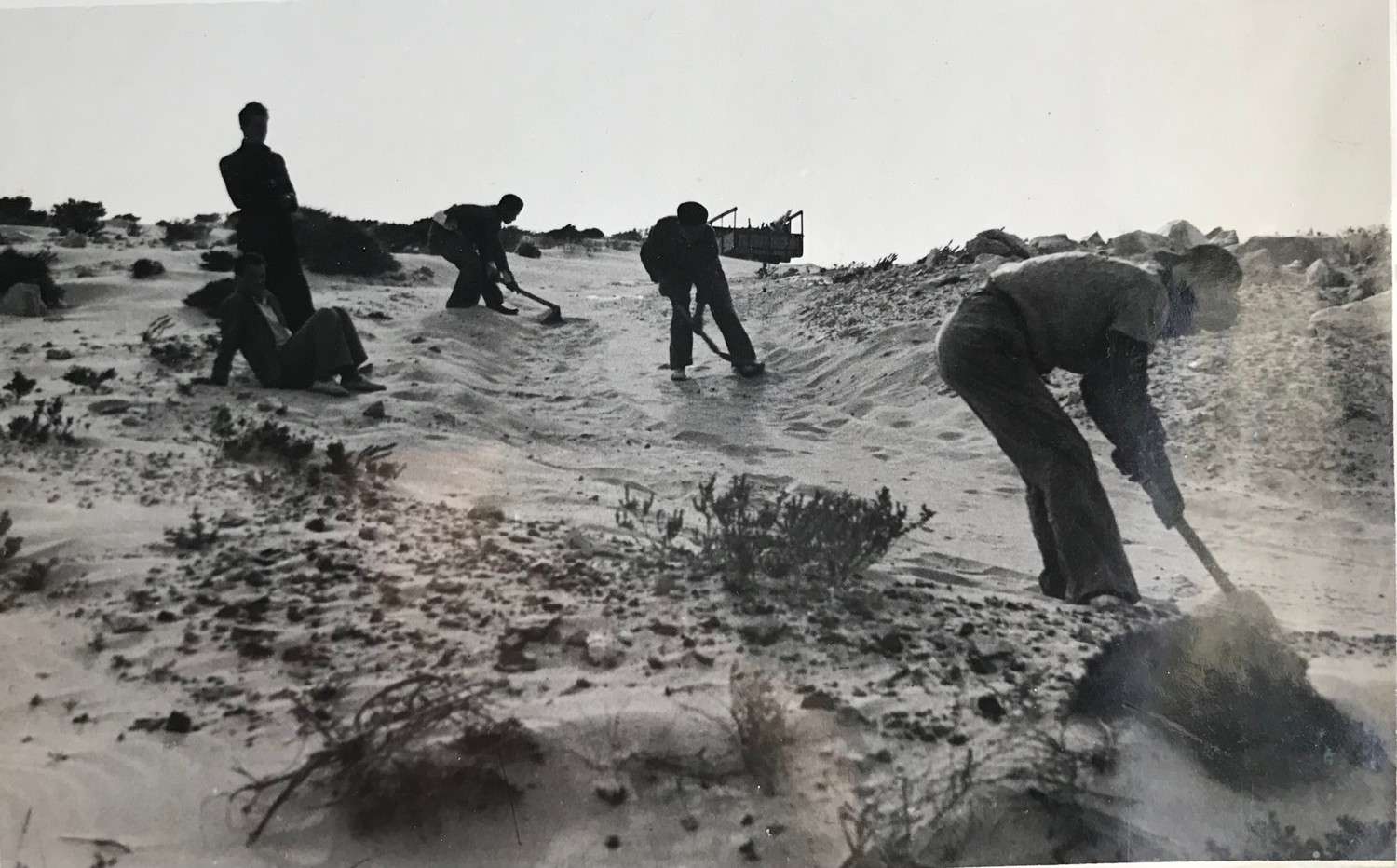 Road construction work at the Jable
Road construction work at the Jable
Such difficulty when it came to crossing the Jable by car in those days, seems to be well portrayed in the magnificent novel called “Cerco de arena” (Fence of Sand) by Enrique Nácher, set in Jandía and written in 1961. Publishing services of the Cabildo Insular de Fuerteventura, ISBN84-87461-57-3.
Having assessed these documents, it becomes clear that the well-known fence of Jandía did not exist prior to 1949. The construction of the fence commenced that same year for the purposes aforementioned, regarding production monitoring according to the medianería agreement. It also becomes obvious, that people and vehicles were allowed access through Matas Blancas, where the security guard lived.
Access through Matas Blancas stopped being watched, in December 1962. By then, a 25% segregation agreement for the land had been reached, for Terrenos Canarios S.A. —R.Myhill— and a further 25% for the daughters of Mr. Manuel Girona. Furthermore, the droughts and low farming efficiency, led to the first steps toward the tourism industry: the wire fence was, no more.

